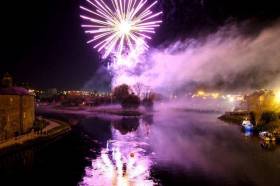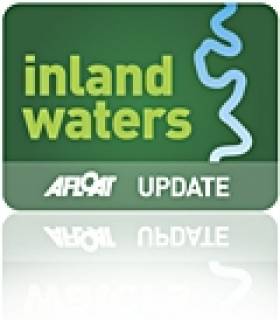Displaying items by tag: Hallowe'en
Fireworks & Flotilla In Enniskillen For Hallowe’en Night
#InlandWaters - Waterways Ireland advises all masters and users of the Erne Navigation that a fireworks display will take place at Castle Island in Enniskillen on Hallowe’en night (Tuesday 31 October) from 8pm to 8.30pm.
Boat masters should also be aware of an event called Light Up the Lough which will take place prior to the fireworks display from 6.30pm.
Light Up the Lough is a flotilla of lit-up vessels from Erne Paddlers, Row the Erne and Erne Boat Hire Ltd. The boats will be dressed in lights and will circle around Castle Island four an hour.
Passing vessels must keep wash to a minimum and stay clear of this activity.
Masters of vessels are advised that there will be no mooring permitted at Waterways Ireland Head Office moorings nor at the Henry Street Public Jetties on the day of the event in the interest of public safety.
Navigation in the vicinity of Castle Island is also prohibited for the duration of the event.
Alternative moorings are available at the Forum and Regal Pass jetties with easy access to event vantage points.
Instructions from safety vessels must be adhered to at all times.
Further information may be had from the Lough Erne Manager/Warden at Waterways Ireland Head Office at 0044 48 66322836.
Navigation Restrictions in Enniskillen for Hallowe'en Night Fireworks
#INLAND WATERWAYS - Waterways Ireland is advising all masters and users of the Erne navigation that a fireworks display will take place at Castle Island in Enniskillen on Hallowe'en night around 8pm.
Masters of vessels are advised that in there interest of public safety, there will be no mooring permitted at the Waterways Ireland head office mooring nor at the Henry Street public jetties on the day of the event.
Navigation in the vicinity of Castle Island is also prohibited for the duration of the event.
Alternative mooring is available at the Forum and Regal Pass jetties with easy access to event vantage points. Instructions from safety vessels must be adhered to at all times.
Further information may be had from the Lough Erne manager/warden at the Waterways Ireland head office at +44 48 66 322 836.
Meanwhile, Waterways Ireland also reminds masters and users of the Lower Bann and Shannon waterways that the winter schedule for lock and bridge opening times will take effect from this coming Thursday 1 November, running till Sunday 31 March 2013.
Full details of opening times are available on PDF format for both the Lower Bann Navigation and the Shannon Navigation.






























































